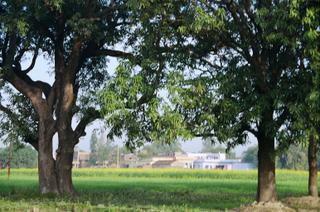 It's been 2 months now that I have been thinking about the best way to start this blog. While I am in the process of applying to B-Schools I would not like to limit the blog to it like some of my favorite blogs. It would be interesting how this blog might turn out a couple of years down the line while I post an average of one article every week. Moving on from the musings let me start with sharing a picture of my ancestral home. This is where my parents came from back in the early 70's. This is where I have my roots and this is where I find peace outside the busy city life.
It's been 2 months now that I have been thinking about the best way to start this blog. While I am in the process of applying to B-Schools I would not like to limit the blog to it like some of my favorite blogs. It would be interesting how this blog might turn out a couple of years down the line while I post an average of one article every week. Moving on from the musings let me start with sharing a picture of my ancestral home. This is where my parents came from back in the early 70's. This is where I have my roots and this is where I find peace outside the busy city life.The white house in the background far removed from the grove is the modern version of a house in a North Indian village. Although we can still spot the mud houses, most of the countryside aspires to build a house of brick and mortar. The thatched roofs have given way to flat concrete roofs which are huge from a city dweller's point of view, which is used to the shoebox designs. The houses still retain a central courtyard with a vacant Brahm Sthan (A Vastu term referring to the center of the house which is to be left vacant for god's antics). There is a verandah outside the house which is as far as a male guest can go unless they are a part of the family. Although the cities in India have experienced lots of socio-cultural westernization the villages still retain the purdah tradition to a great extent.
Its interesting that someone once told me how the purdah came into existence. Indian women were far removed from the diffidence associated with them sometimes. They played a role which was of an equal gender. Some parts of the Indian sub continent still witness women performing most of the outdoor activities. I am not aware of too many religions were a women takes the role of a goddess sometimes more powerful than a male Devta (Hindi for God). They were depicted as gorgeous creations of the almighty on the Hindu Temple architecture. They are still considered to be reincarnations of goddess Lakshmi (goddess of wealth) whenever born in a household. With their gift to create life they hold a position of honor and respect in every eye. So how did the transition behind the veil happen? It is said that during the Middle Ages when conquerors from central Asia plundered the land of riches (India), men used to be drafted into the king's army and women used to be left behind looking after the young ones and the household. This used to make them vulnerable (unprotected from lecherous men). Also, as Islam prescribed a strict code of purdah (veil) and it was the religion of the king. Most of the conversions happened during the middle ages. Aurangzeb is considered to be a Mughal ruler who enforced the strict Islamic code of conduct in India. So, in some cases it was the men folk who insisted on the veil of secrecy and in other cases it was the religious influence for a few centuries.
I would be dwelling further on the rural lifestyle of the Indo Gangetic plains in my future posts but thought that I need to start my autobiography from where my journey begins, my village- Mangari.